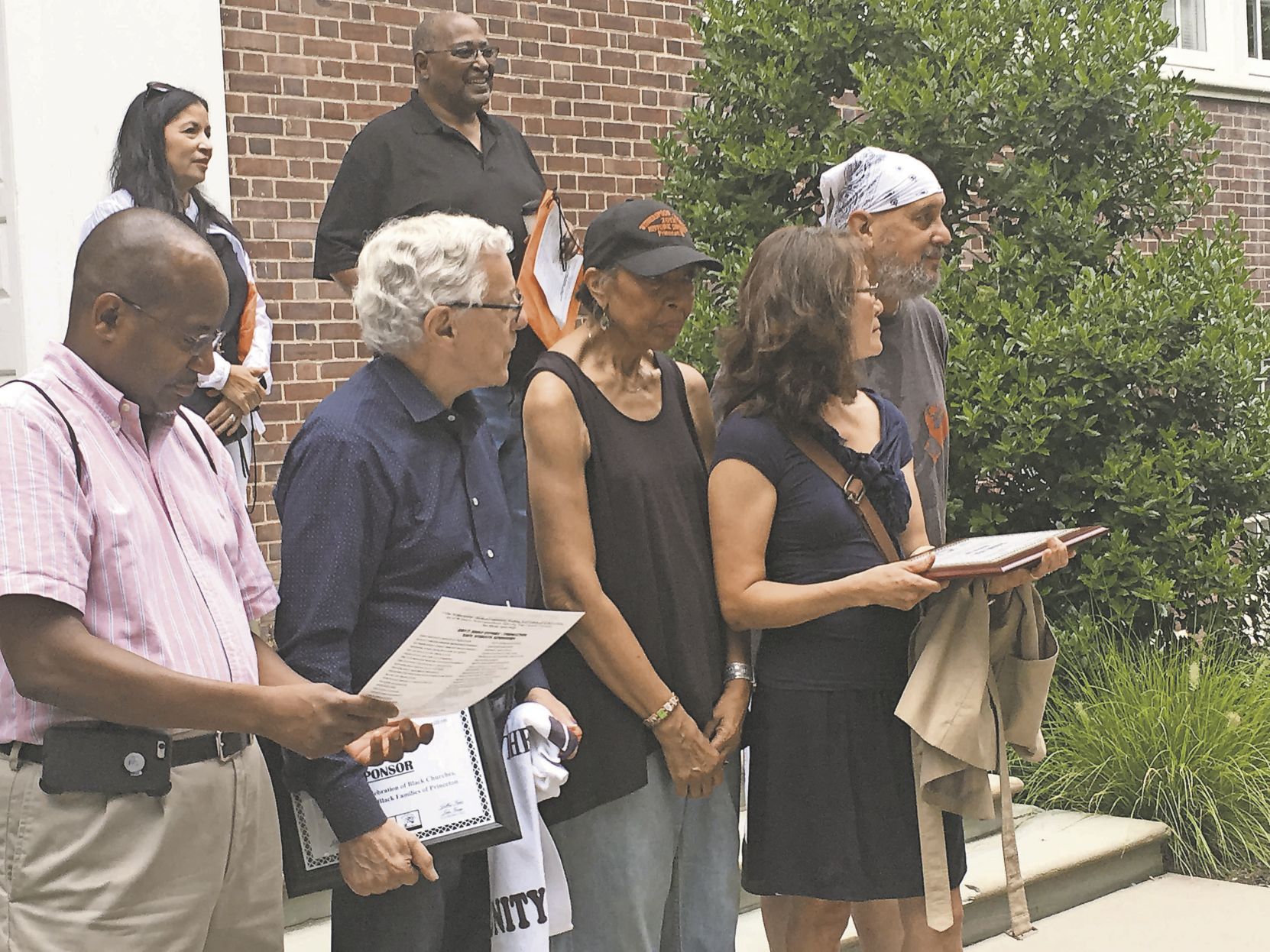By Lea Kahn, Staff Writer
More than a century after the first African-American families settled in the Witherspoon-Jackson neighborhood, only a handful of those families still call it their home – and it’s anybody’s guess how many of their descendants will still be there 50 years from now in 2067.
That’s when a time capsule, which was buried on the lawn at The Waxwood apartment building on Quarry Street Saturday morning, will be opened and its contents revealed, offering a glimpse into the neighborhood’s past.
The burial of the time capsule on the grounds of the brick apartment building, which began life in 1909 as the Witherspoon Street School for Colored Children, was one of the highlights of the annual Joint Effort Princeton Safe Streets program.
The annual Joint Effort Princeton Safe Streets program is coordinated by John Bailey, who grew up in the Witherspoon-Jackson neighborhood and who now lives in Colorado.
This year, the focus of the program was on the four African-American churches in the neighborhood – the First Baptist Church of Princeton, Mount Pisgah African Methodist Episcopal Church, the Witherspoon Street Presbyterian Church and the Morning Star Church of God in Christ.
Meanwhile, more than 60 people from the Witherspoon-Jackson neighborhood gathered for the time capsule ceremony. Many were long-time residents of the neighborhood – bordered by Paul Robeson Place, Bayard Lane, Witherspoon Street and Birch Avenue – and some were newcomers, but they all shared an interest in the time capsule and its contents.
Joyce Gillette Johnson, who grew up in the Witherspoon-Jackson neighborhood, said she thought the time capsule was a great idea.
“The sad thing is, I won’t be here when they open it up in 50 years. Probably my great-grandchildren will be here. But that’s okay. Princeton probably will be so changed 50 years from now,” said Johnson, who is 74 years old.
Johnson watched as some attendees put large envelopes containing memorabilia in a large metal box. The envelopes contained everything from family photographs to church programs from the four African-American churches.
A copy of Kathryn Watterson’s new book, “I Hear My People Singing,” which is an oral history of the Witherspoon-Jackson neighborhood, also was placed in the time capsule.
“Standing on the steps of this particular school, remember, you have a lot of history here. Think of the people who went to school here. Think of Mr. Waxwood,” said John Bailey, who coordinated the Joint Effort Princeton Safe Streets program.
Howard Waxwood, for whom the apartment building was named, was the principal of the school when it educated African-American children. He continue in that role after integration in 1947, when it became the junior high school for the former Princeton Borough public school district.
Princeton Councilman Lance Liverman, who attended the event along with Councilman Tim Quinn, said, “It is an exciting time, but I won’t be here at 105 years old (when the time capsule is opened).”
But the people who will open the time capsule will realize the rich culture of the neighborhood and all of the memories that it holds, said Liverman, who was born in Princeton.
“You can’t go forward without knowing where you came from,” Liverman said.
Shirley Satterfield, neighborhood historian and president of the Witherspoon-Jackson Historical and Cultural Society, agreed.
“It is important to keep (an awareness of) history. This is still our neighborhood. Our ancestors are here, and we have to preserve it, even though it has changed,” Satterfield said.
Then, Bailey handed out keys to the time capsule to representatives of the four churches, the Witherspoon-Jackson Historical and Cultural Society, the Town of Princeton, and the Hill and Rivers families, among others.
“We know you have got the keys. Here is an important piece – feel good about what happened here. Your ancestors are touching you,” Bailey said.
Wrapping up the ceremony, the time capsule was sealed and placed in a six-foot-deep hole. One by one, attendees picked up a clump of dirt from a pile and tossed it onto the time capsule.
Home Uncategorized




